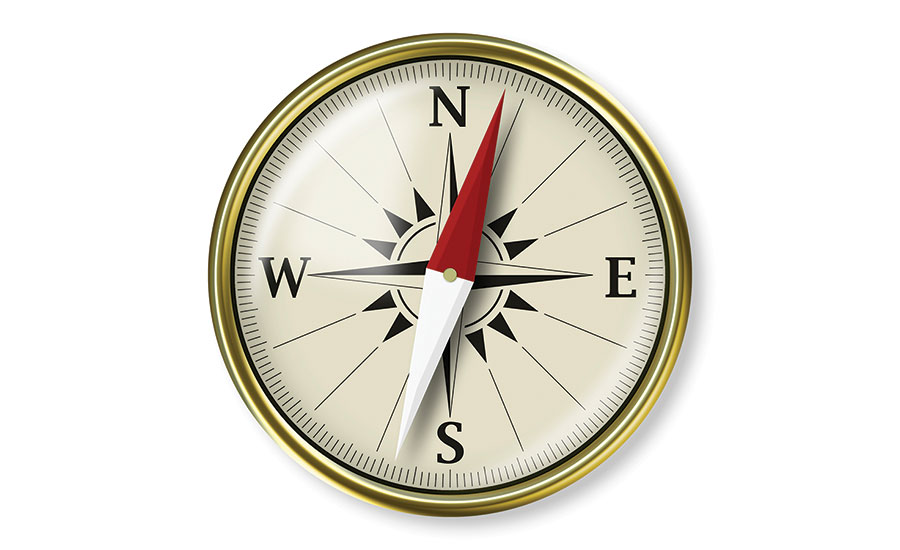Remember when you graduated from college and headed out to start your career in the safety and health profession with that altruistic belief that you were going to tear up the world and make a huge difference in the safety and health of fellow employees.
Well, how did that work out for you?
If you are like most of us, after some time you came to the realization that safety work isn’t what you expected it to be. For those of us who entered the profession back in the 70s, 80s, and even the 90s, most believed management was going to be supportive of safety and view our safety suggestions as being value-added to the enterprise. Some of us abandoned the profession after hitting the proverbial brick wall with management. The majority stayed the course and have enjoyed the work, the challenges, and consulting in their retirement.
During the course of our careers, we ask probably ourselves, “Why does it matter?” Generally, we return to the grind and push forward.
Incorrect answers
An interesting systemic approach to “Why does it matter?” comes from book entitled, Why It Matters – The Sherpa Guide to What You Are Looking For,1 by Brenda Corbett and Jennifer Chloupek. A metaphor of a compass details four steps for you to discover Why It Matters.
The authors first describe what your personal Why It Matters is not. It is not what others say should matter — only what makes sense to you. It is not your purpose or passion. It is not a broad metaphysical reason for being. It is not a label or category to define the life you have already led.2
This is not about what you do; it is about who you are — a sense of your internal drive.
Next, explore aspects of yourself identified in each point of the compass – North, South, West, and East.
What has been your exposure?
North refers to things you have learned and is represented by the word Exposure — experiences and things you learned from your parents, school, and community.
North Exposure is described in the People, Places and Things that have contributed to your Value System. Who were the People (parents, teachers, coaches, mentors) who had the greatest impact on your life? What did they do to create that impact? Places and Things relate to the places you “hung out” while growing up. All of these play into the standards and principles you live by and value. The authors provide a list of values to choose from, such as Accomplishment, Honesty, Family Balance, Loyalty, etc.3
What do you tell others?
South is represented by the word Evidence — things you tell other people revealing the strengths, weaknesses, stories and words that form you and from which people judge you.
South Evidence focuses on your Strengths, Weaknesses, Words you say, and Stories you share. You are looking for the basis of your choices, decisions, attitudes, behaviors, and opinions. To discover your known Strengths, reflect on those areas where you consistently deliver high performance. To surface your unknown Strengths, ask three colleagues or friends to tell you a story of when you were at your best. The authors list a number of Strengths to draw from, such as Enthusiastic, Humble, Direct, Inclusive, Thoughtful, etc.4
When listing Weaknesses, focus on behaviors, not skills. What are the Weaknesses that you believe are holding you back in your professional, personal, social, and spiritual life? Sometimes one or more of your Strengths can be a Weakness. For example, do you ever find colleagues intimidated by your enthusiasm on a project? Consider your Strengths and decide if your overuse of them may be one of your Weaknesses. To discover Weaknesses you are not aware of, ask several trusted colleagues for honest feedback. Listen and take note. The authors provide a list of Weaknesses, such as Intimidating, Rude, Aggressive, Moody, Obsessive, etc.5
Take a day or two and listen to the Words you use in daily conversation. Words matter and often define who you are by those who listen to us talk. Ask yourself what Stories you share to tell about yourself, what themes transcend these stories, what are the five most commonly used words, and what do you say or repeat to those close to you?6
What motivates you?
West is denoted by the word Excitement — what excites you.
West Excitement is the step where you find what motivates, drives, fulfills, and satisfies you. Excitement leads you to do what you want to do. Knowing what motivates you guides you to avoid situations that are not satisfying.7
What is your brand?
East is designated as Essence — your sense of wonder, imagination, and mystery.
East Essence involves discovering your brand. It is what people have come to expect from you — how you act or react in a given situation. This requires you to reflect on what makes you, you. What patterns of behavior do you find yourself repeating again and again that deliver success to you and those around you.8
Forget the clichés
After gathering this data about yourself, you can answer Why It Matters to you personally. This is not about clichés like, “I want to make a difference” or “I want to help people.” The question is, how are you going to do either of these or other desires. In other words, what is it that YOU have to do personally to achieve your Why It Matters?
Some of the Why It Matters descriptions the authors share include: To Accomplish, To Adjust, To Anticipate, To be a Catalyst, To Serve, To Teach, To Connect, To be Understood, etc.9
All of us hit moments in our lives where we wonder if what we are doing really matters, both professionally and personally. Corbett and Chloupek provide an interesting approach to assist us in discovering our Why It Matters.
1 Corbett, B. and J. Chloupek. 2014. Why It Matters – The Sherpa Guide to What You Are Looking For. Sasha Corporation. Cincinnati, OH.
2 Ibid. pp. 7.
3 Ibid. pp. 17-24.
4 Ibid. pp. 25-31.
5 Ibid. pp. 32-42.
6 Ibid. pp. 42-46.
7 Ibid. pp. 47-53.
8 Ibid. pp. 54-58.
9 Ibid. pp. 65





